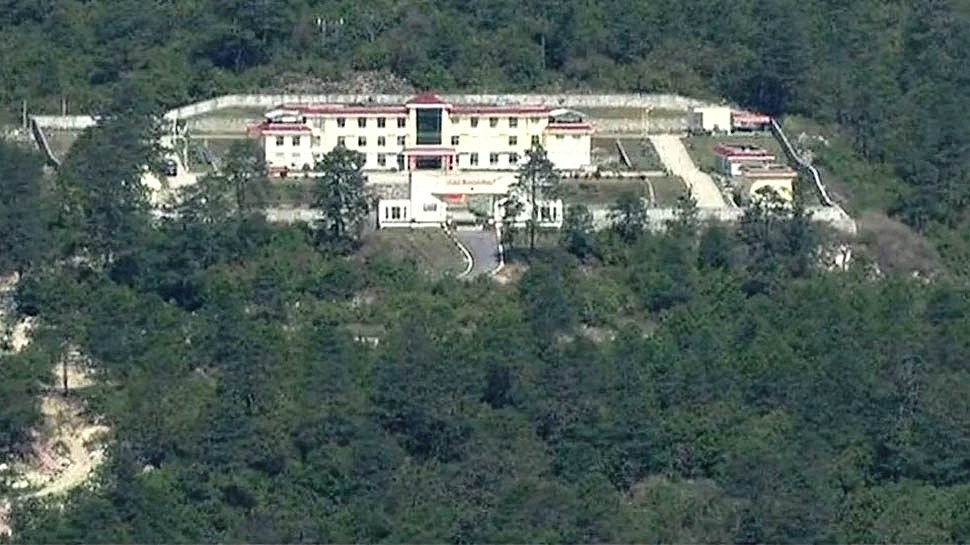Insta
As Infra Gap Grows, Phones On Indian Side Of LAC In Arunachal Show ‘Welcome To China’ Message

Tatu Military Complex (ANI)
Signs of growing infrastructure gap between the Indian and Chinese sides of the 4,057-km long Line of Actual Control (LAC) are becoming more evident.
In Arunachal Pradesh’s Kibithu, nestled in Anjaw district, 'Welcome to China' message suddenly pops up on the phone in Mandarin and the device switches to Beijing time as one moves towards the LAC on a narrow and bumpy road.
On the other side of the border is the sprawling Tatu Military Complex of the People's Liberation Army (PLA). The complex has well laid-out structures, including a three-storey building connected by a smooth and wide road. The camp is flanked on both sides with two plain areas. The one on the left is a Small Arms Firing Range having white targets neatly lined up. The right flank has a massive base of concrete at the centre and appears to be a helipad under construction.
Near the complex are two grey towers, made of iron planks with white antennae on four sides. These towers provide round-the-clock connectivity to the military complex, the troops stationed in the area and the locals. Signals from these towers are “available even many kilometres inside the LAC”, a report in ANI says.
In contrast, the Indian side depends on an optical fiber line laid down in 2003. The line, which stretches over 280 km, requires maintenance on a daily basis.
"But we have no connectivity, whether it is roads or mobiles. It takes a mental toll. Even the evacuation of an injured soldier becomes a huge logistical challenge since the only road coming to Kibithu from Tezu is frequently blocked by landslides," an Indian Army officer was quoted by Times of India as saying.
"If the road is cut off during hostilities, we will not be able to move troops or equipment. The main operational challenge for us here is the lack of roads, bridges and inter-valley connectivity, not military equipment or manpower," he added.
While China has built an expansive rail and road network in Tibet which can be used in the event of war, India has only been able to build 28 of the 73 all-weather border roads identified for construction almost two decades ago.
Introducing ElectionsHQ + 50 Ground Reports Project
The 2024 elections might seem easy to guess, but there are some important questions that shouldn't be missed.
Do freebies still sway voters? Do people prioritise infrastructure when voting? How will Punjab vote?
The answers to these questions provide great insights into where we, as a country, are headed in the years to come.
Swarajya is starting a project with an aim to do 50 solid ground stories and a smart commentary service on WhatsApp, a one-of-a-kind. We'd love your support during this election season.
Click below to contribute.
Latest